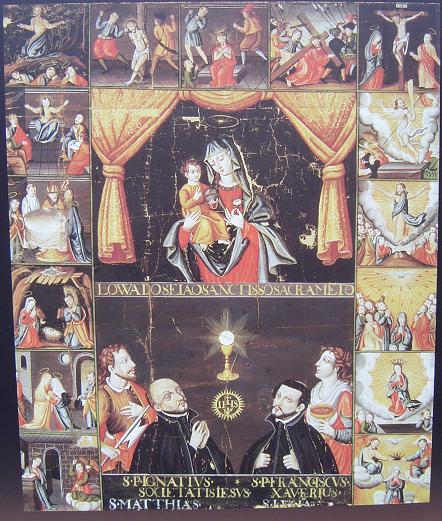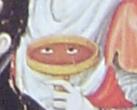A bit of Japanese Christian history, via the Asahi Shimbun (links added):
KYOTO–Behind the serene smile of the Madonna in the scroll “Maria Jugo Gengizu” linger clues about a history of bloody religious persecution.
Dating from the early Edo Period (1603-1867), the unique religious icon, whose name means 15 scenes from the life of Mary, remained hidden for centuries.
…Those who created and preserved the painting risked their lives to do so. In the early 17th century, the Tokugawa Shogunate outlawed Christianity, and Christians were forced to renounce their religion on pain of death–sometimes by burning or crucifixion. Devotees went underground, becoming kakure kirishitan, or hidden Christians.
…The painting is done mostly in oil paint, using a color scheme virtually unknown in Japanese art. At the same time, parts of the picture are done in Chinese ink, and Mary, who traditionally holds roses, is holding a flower more familiar to Japan, the camellia.
Specialists assume the painting was executed by a Japanese artist who had studied Western techniques.
The scroll is now on temporary display for the first time, at Kyoto University Museum. Here’s a rough idea of what it looks like, from my photo of the poster outside the exhibition:

One detail that puzzles me: what is the woman holding and why does it apparently contain a pair of eyes?

UPDATE: Commentator Ray explains the eyes:
The woman is St. Lucy and she is always portrayed with a tray with a set of eyes. It had to do with her martyrdom. It was also said that a pagan man fell in love with St. Lucy because of the beauty of her eyes. since she refused to have anything to do with him, he reported her as a Christian. So before she died she gave them to him, so that he could have them. A good story if there ever was one.
Filed under: Uncategorized | 4 Comments »


